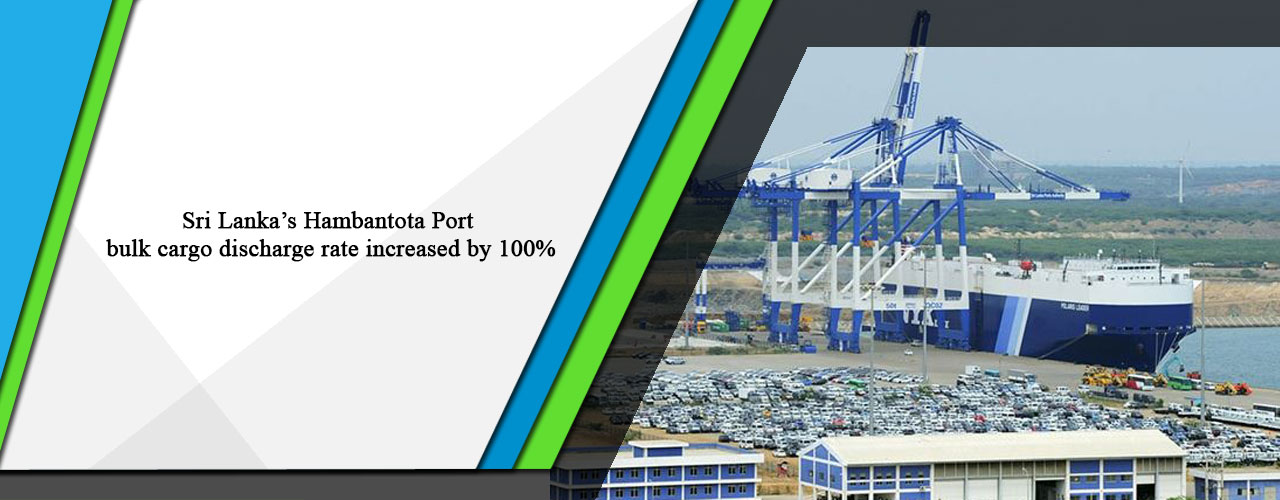Sri Lanka’s Hambantota Port bulk cargo discharge rate increased by 100%
Sri Lanka’s Hambantota International Port (HIP) has reportedly recorded its highest discharge levels of bulk cargo recently, when a shipment of gypsum consigned to Insee Cement was unloaded at a rate of 24,000 metric tonnes (MTs) per day by port operations.
Insee Cement Procurement and Logistics Director Thusith Gunawarnasuriya has been quoted saying that this was an extraordinary achievement for a Sri Lankan port in terms of speed and efficiency. “As the No. 1 cement manufacturing company in Sri Lanka, we import raw materials in large vessels. But once these vessels arrive in the country, it is up to port operations – in this case HIPG and HIPS – to discharge the vessels quickly. The quicker the cargo is discharged, the more benefit not only to us but also the country, because for each day the vessel remains in port, we pay vast amounts in detention and demurrage – something to the tune of US$ 75,000. Therefore, when we are able to discharge two-and-a-half days earlier like we did this time, the cost saving is significant. Yes, it is an advantage for our company, but it is also a considerable saving in foreign exchange for the country.”
Gunawarnasuriya has further noted that the handling speed at HIP has increased 100%, from just about a year ago, when the port could discharge only around 12,000 MTs per day. He says the almost-doubled productivity coupled with excellent service levels is “nothing short of remarkable”.
Hambantota International Port Group (HIPG) Senior General Manager of Operations Sylesh Peerez has reportedly attributed the port’s increased efficiency to a high level of productivity and streamlined operations, combined with excellent co-ordination. “Apart from that, our team’s execution was flawless. There are a lot of constraints in handling an operation like this, as it involves unloading via cranes, loading material onto trucks, etc., which means we have to ensure minimum impact on the environment, health, and safety of those involved in the operation, etc. Achieving this level of productivity amidst all these constraints is a milestone for HIP and we believe is a first by a Sri Lankan port.”
According to Peerez, the way they optimised and increased their resources, efficient planning of manpower such as stevedoring, and the higher levels of communication between the logistics provider and the port, contributed to the success of the operation. “We were able to complete a very labour-intensive operation, notwithstanding strict adherence to Covid protocols,” he has added.
OSL take:
Sri Lanka’s Hambantota Port is continuously recording a growth in it’s operations that are likely to see a further boost once the industrial zone within the port premises starts full operations. Sri Lanka is fast becoming a business hub in the South Asian region given its geographical positioning in the Indian ocean and the many trade agreements as well as trade concessions enjoyed by the country. All this has given much prominence to Sri Lanka’s maritime industry as well. The country’s authorities are working towards making Sri Lanka a maritime hub in the region given the country’s placing in close proximity to international maritime routes. Foreign businesses/investors could therefore explore business/investment opportunities in Sri Lanka’s maritime industry.
| Article Code : | VBS/AT/20210723/Z_3 |

